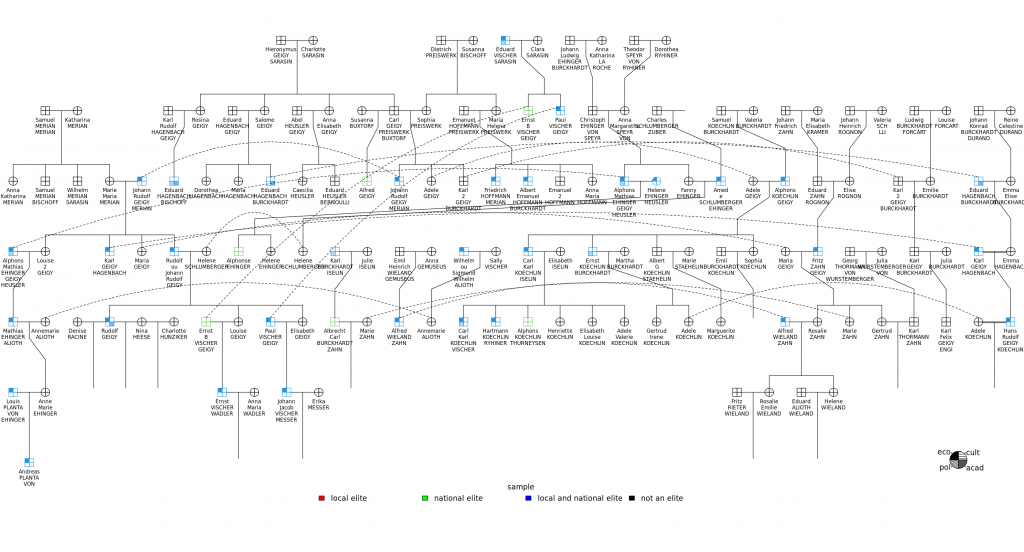Pierre Benz has presented an article co-authored with Pedro Araujo, Geoffroy Lengentilhomme, André Mach, Michael A. Strebel, and Emilie Widmer at the 6th European Conference for Social Networks on the evolution of urban power structures and the role of well-established families and their kinship ties within these power structures. Scholars have demonstrated the important role of inheritance and dynastic patterns for the perpetuation and deepening of inequality. Switzerland is a country without royal dynasties. Historians have shown that patrician families – those that occupied positions of power in important Swiss cities before the French revolution – continued to play an important role in Swiss cities until the beginning of the 20th century. However, little is known about the evolution of this ‘patrician power structure’ over the course of the 20th century. Social network analysis is of crucial help to analyze the changing place of the patrician family members in the different spheres of power and the reproduction of local patrician elites through up to six generations. To cope with the challenges of historical data sources, we combine historical with sociological approaches. Building on a systematic database of local elites who hold positions of power in the main economic, political, academic, and cultural institutions of the three major Swiss city-regions (Basel, Geneva, and Zurich), we analyze the evolution of kinship networks of the Swiss urban power elite between 1890 and 1957. We focus on both power positions and kinship ties by combining social network analysis, kinship analysis, and prosopography on historical/biographical data on about 5,200 local elites. Our analyses proceed in three steps. We first analyze the long-term presence of representatives of old patrician families at the head of different local organizations and institutions in different social spheres and in different city-regions. In a second step, we study the cohesion of these patrician families through an analysis of kinship ties to the 4th degree of consanguinity and affinity. For instance, we look at the percentage of old patrician family members of the same local elite cohort that are linked through a marriage or lineage link. In a final step, we present some illustrative examples of patrician families, and how their descendants have maintained or abandoned their elite positions during the 20th century.
→ Paper
